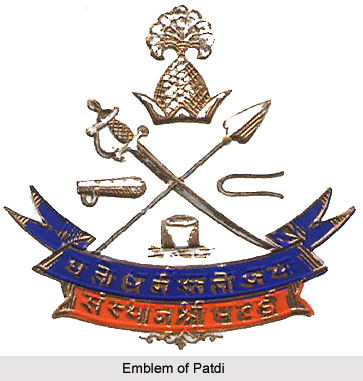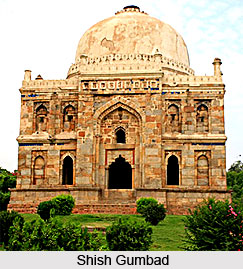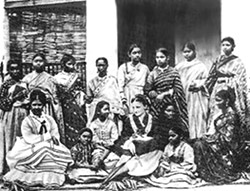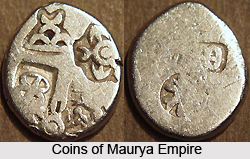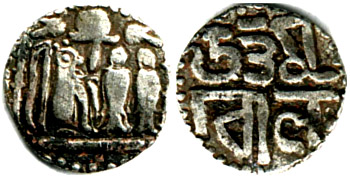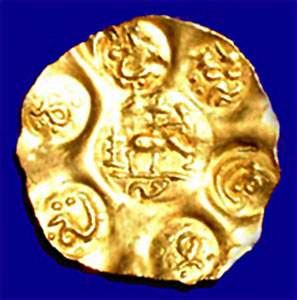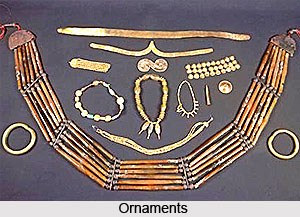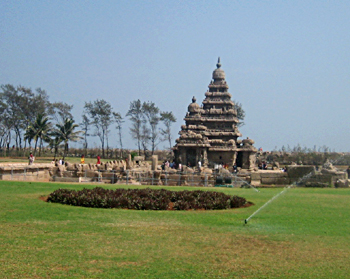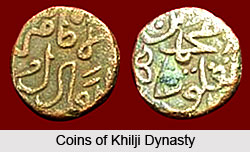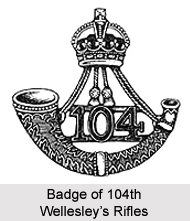 The 4th Bombay Native Infantry was an infantry regiment that belonged to the British Indian Army. It was formed in the year 1775 as the 5th Battalion, Bombay Sepoys by the Honourable British East India Company and remained active till 1922. It was included in the Bombay Native Infantry of the Bombay Army, one of the main Presidency Armies in British India. The Bombay Army was the official military of the Bombay Presidency. It was also a part of the Bombay Command. It functioned under the administration of the East India Company until the Sepoy Mutiny of 1857. But after the institution of the Government of India Act 1858, the infantry regiment was operated by the British Empire in India. In 1903, the army battalion became a part of the United British Indian Army. The 4th Bombay Native Infantry was also known as the 104th Wellesley`s Rifles regiment.
The 4th Bombay Native Infantry was an infantry regiment that belonged to the British Indian Army. It was formed in the year 1775 as the 5th Battalion, Bombay Sepoys by the Honourable British East India Company and remained active till 1922. It was included in the Bombay Native Infantry of the Bombay Army, one of the main Presidency Armies in British India. The Bombay Army was the official military of the Bombay Presidency. It was also a part of the Bombay Command. It functioned under the administration of the East India Company until the Sepoy Mutiny of 1857. But after the institution of the Government of India Act 1858, the infantry regiment was operated by the British Empire in India. In 1903, the army battalion became a part of the United British Indian Army. The 4th Bombay Native Infantry was also known as the 104th Wellesley`s Rifles regiment.
Military Operations of 4th Bombay Native Infantry
The 4th Bombay Native Infantry first fought at the Third Mysore War and took part in the Mysore Campaign. Then the troops served Mysore Campaign during the Fourth Mysore War. In the year 1821, the troops were sent to the Beni Boo Ali campaign, where they fought against the bandits in the regions of Persian Gulf and Eastern Arabia. After the unit came back to British India, it participated in the Siege of Multan in the Second Anglo Sikh War. The regiment also took part in the Anglo Persian War in the year 1856. The troops remained loyal to the British East India Company during the outbreak of the Sepoy Mutiny in 1857 and served in the Central India Campaign.
The 104th Wellesley`s Rifles regiment later fought in the Battle of Kandahar during the Second Afghan War. Later it provided active military service during the Sudan Campaign in East Africa. During the beginning of the First World War, the military unit became a part of the 6th (Poona) Division and took part in the Mesopotamia Campaign. In November 1915, the 6th Division failed to achieve success in the Battle of Ctesiphon and later in April 1916, the troops surrendered.
Development of 4th Bombay Native Infantry
In the year 1922, the British Government of India re-grouped the regiments of the British Indian Army, after the First World War. Several large multi battalion infantry regiments comprising 4 to 6 battalions by the amalgamation single battalion infantry units. The 4th Bombay Native Infantry was re-designated as became the 1st Battalion 6th Rajputana Rifles.
After the Indian independence and the formation of the Union of India and the Dominion of Pakistan, the 4th Bombay Native Infantry was assigned to the modern army of India.
Designations of 4th Bombay Native Infantry
The 4th Bombay Native Infantry occupied a number of designations through out its service. These are mentioned below-
* 5th Battalion, Bombay Sepoys in 1775
* 9th Battalion, Bombay Sepoys in 1778
* 2nd Battalion, 2nd Regiment of Bombay Native Infantry in 1796
* 4th Bombay Native Infantry in 1824
* 4th Bombay Infantry (or Rifle Corps) in 1885
* 4th (1st Battalion Rifle Corps) Bombay Infantry in 1889
* 4th Bombay Rifles in 1901
* 104th Wellesley`s Rifles in 1903
* 1st Battalion 6th Rajputana Rifles in 1922



